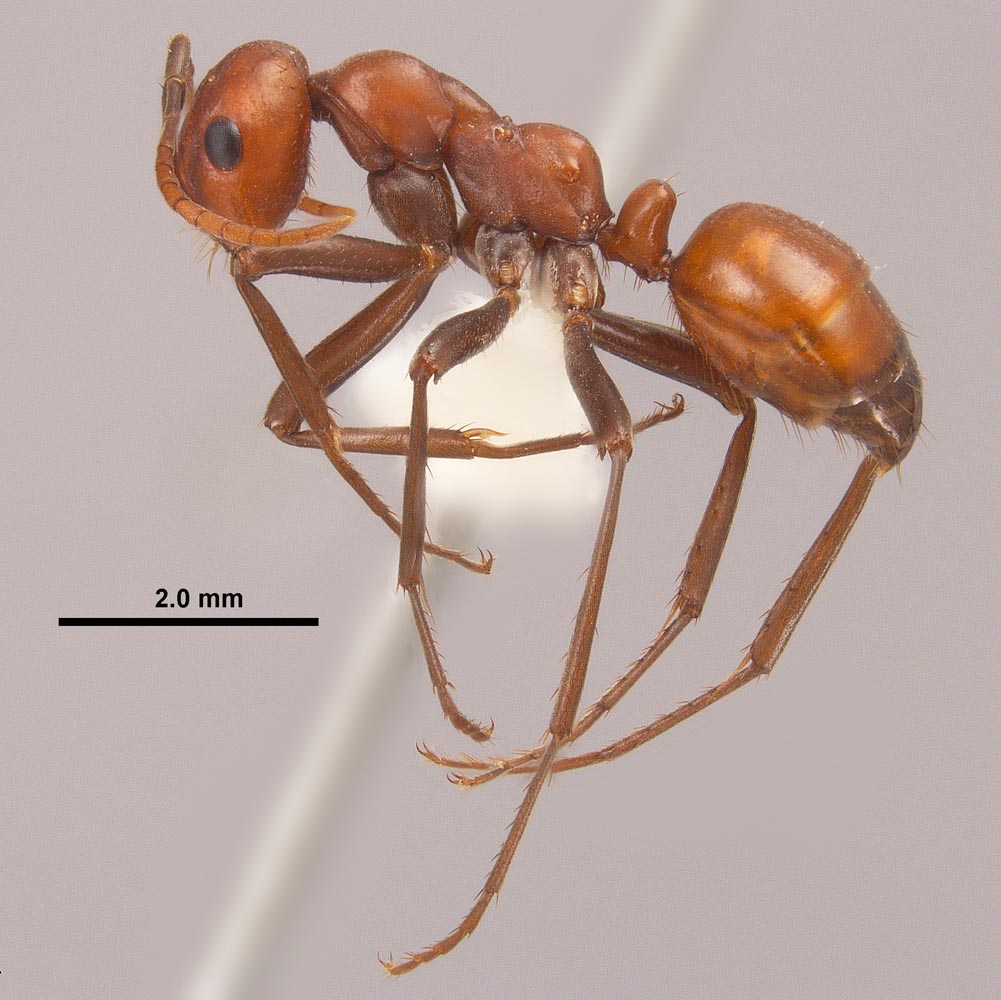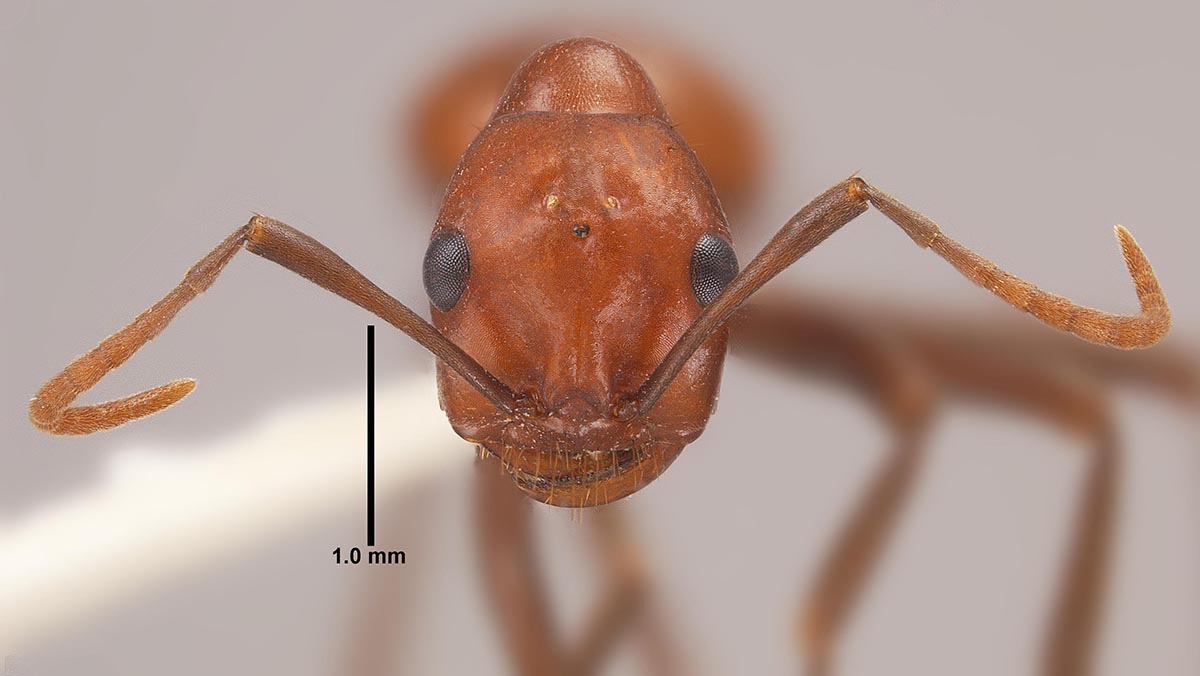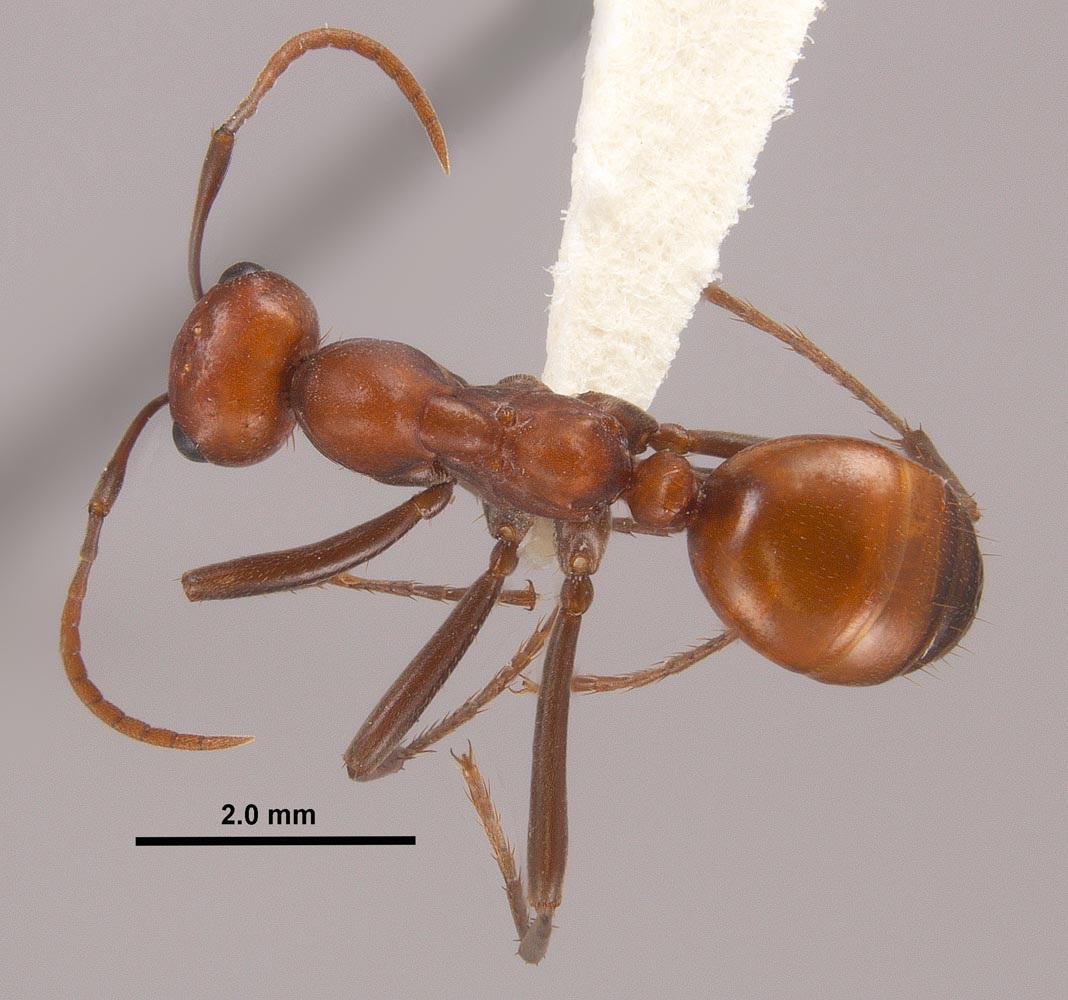Subfamily FORMICINAE by Joe A. MacGown, uploaded 20 August 2014 |
||
 |
||
Polyergus ruber, full face view of a worker (photo by James Lewis and Joe MacGown) |
Polyergus ruber, lateral view of a worker (photo by James Lewis and Joe MacGown) |
Polyergus ruber, dorsal view of a worker (photo by James Lewis and Joe MacGown) |
Introduction Polyergus species are obligatory or true slave-making ants. In nest founding, the female enters a nest of the host species, eventually kills the rightful queen, and uses the host workers to tend her brood. Polyergus colonies conduct slave raids on nests of various species of Formica, and workers of the host are taken and used by the Polyergus colony to feed and rear the brood and excavate the nest. Polyergus workers are incapable of surviving without slaves. In laboratory colonies, a colony without slaves will starve to death even when plentiful food is available. (Hedlund, 2007; King and Trager, 2007). Taxonomic History (from Trager 2013, Bolton 2014) Identification Polyergus ruber is most similar to P. longicornis and P. lucidus. It differs from P. longicornis by being shinier and having less pilosity on the vertex, and it differs from P. lucidus by having longer appendages. Additionally, P. ruber differs in that its host is Formica biophilica. Biology and Economic Importance Distribution (from Trager 2013) Literature Cited Hedlund, K. S. 2007. The Ants: North America Catalog: Genus Polyergus. http://www.cs.unc.edu/~hedlund/playpen/dev/ants/catalog/ (accessed 6 June 2008). King, J. R. and J. C. Trager. 2007. Natural history of the slave making ant, Polyergus lucidus, sensu lato in northern Florida and its three Formica pallidefulva group hosts. 14 pp. Journal of Insect Science 7: 42, available online: insectscience.org/7.42 Trager, J. C. 2013. Global revision of the dulotic ant genus Polyergus (Hymenoptera: Formicidae, Formicinae). Zootaxa 3722 (4): 501–548. Links |
||




